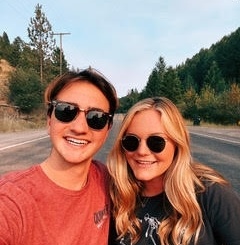
By Kit Humberger
Staff Writer
Juniors Gemma Burstein and Luke Arizpe work with the Friendship Foundation to co-run a science class for its members, ranging from elementary school to adults. Each month, they visit the foundation and bring a science project to teach the people in the program.
Their class, Rad Scientists, started with just three or four attendees, but now they are fully booked and have a waitlist for their program. According to Burstein, the hour-long program started last summer and continues to this day, monthly.
“Toward the end of last year, the Friendship Foundation reached out to Costa’s Friendship Club, asking if anyone was interested in leading an activity for their summer camp,” said Burstein. “I volunteered to lead a science activity. I’d go weekly to the summer camp and bring experiments, demonstrations and games.”
Burstein and Arizpe first met in Costa’s biotech program. Over the summer, they both volunteered at the Friendship Foundation, but only Burstein led the science camp. The two teamed up before the beginning of the school year and decided to keep the class going through the school year.
“We both thought it would be a great idea to continue [the program] into the school year on a regular basis,” said Arizpe. “We initially started doing it twice a month, but now with more people coming and a lot more preparation [needed], we’ve started doing it on a monthly basis.”
Burstein and Arizpe work together to find new and exciting activities for the kids every month. They typically start their camp with an experiment or demonstration and end with a game of science bingo. According to the pair, they use a lot of chemistry in their lessons because the visible reactions keep the kids engaged.
“For our last experiment we did an iodine clock experiment,” said Burstein. “It’s a very complex experiment that we tried to explain to the students on a simpler scale. You mix two things together, and it doesn’t look like anything’s happening at first, but then it instantly changes color, which makes it super fun.”
They utilize science blogs for inspiration for easy science experiments that grab kids’ attention. According to Arizpe, one of their main challenges is finding experiments that aren’t too complex or redundant for the kids.
“A big goal for us is not only seeing them have fun but to teach them and make sure they understand what we’re doing in these experiments,” Arizpe said. “Especially when we’re doing more complicated things, keeping the students engaged can be difficult. My favorite experiment we’ve done is definitely the elephant toothpaste experiment. You mix peroxide and yeast together and it expands.”
Burstein and Arizpe have developed a close relationship with the staff at Friendship Foundation as a result of their science camp. The pair chooses the projects each month and runs the program, but the foundation helps schedule the meetings and provides supervision. They’ve also started accepting volunteers to work with the kids during the camp and always welcome extra hands.
“At first it was just us two [leading the camp], but more recently we’ve had volunteers from NCL and Amigos Unidos,” said Arizpe. “There are also workers at the foundation that help a lot with the kids who need more attention, and they’re super helpful.”
Both Arizpe and Burstein agree that running the camp has been an amazing experience. They’ve formed friendships with many of the kids in the camp and get to spread their love of science to the community. According to Burstein, she is extremely proud of the impact of Rad Scientists in the South Bay.
“I’ve worked with the Friendship Foundation previously, and it’s an amazing program. You can really see how the foundation helps to facilitate things that spark joy,” Burstein said. “[This is] a really awesome opportunity and a great thing to have in our community.”




Leave a Reply